ESA Navigation 
zdroje zpráv:
Galileo: the journey of satellites 33 and 34
19.12.2025 17:30 Video:
00:05:30
Video:
00:05:30
On 17 December 2025, two new Galileo satellites lifted off from Europe’s Spaceport in French Guiana. This was the 14th launch for Europe’s satellite navigation operational satellite programme, reinforcing Europe’s resilience and autonomy. The flight, VA266, was the first launch of Galileo satellites on Europe’s newest heavy-lift launcher Ariane 6.
The satellites, designated SAT 33 and SAT 34, separated from the launcher after a flight of just under four hours. The launch was declared successful after acquisition of signal and the confirmation that both satellites are healthy with their solar arrays deployed.
“With these new satellites, we strengthen Europe’s global navigation services - delivering greater precision, reliability and autonomy in space”, affirmed Andrius Kubilius, EU Commissioner for Defence and Space.
“Galileo stands as the world’s most accurate global navigation satellite system – and today we have increased its reliability and robustness,” said Josef Aschbacher, ESA’s Director General.
The European Space Agency was responsible for carrying out the Galileo launch with Arianespace on behalf of the European Commission. The Galileo satellites were manufactured by OHB, under contract with ESA. Now in orbit, the EU Agency for the Space Programme (EUSPA) brings the satellites into service and oversees their operation.
Galileo’s first Ariane 6 launch strengthens European resilience
17.12.2025 11:00
On 17 December, two Galileo satellites lifted off from Europe’s Spaceport in French Guiana aboard an Ariane 6 rocket. This marked the 14th launch for Europe’s Galileo constellation, reinforcing Europe’s satellite navigation capabilities, resilience and autonomy.
Galileo L14 launch highlights
17.12.2025 11:00 Video:
00:03:01
Video:
00:03:01
On 17 December, two new Galileo satellites lifted off from Europe’s Spaceport in French Guiana aboard an Ariane 6 rocket. This marked the 14th launch for Europe’s satellite navigation operational satellite programme, reinforcing Europe’s resilience and autonomy.
The European Space Agency (ESA) is responsible for carrying out the Galileo launch with Arianespace on behalf of the European Commission. The Galileo satellites were manufactured by OHB, under contract with ESA. Once in orbit, the EU Agency for the Space Programme (EUSPA) will bring the satellites into service and oversee their operation.
The flight, designated VA266, was the first launch of Galileo satellites on Europe’s newest heavy-lift launcher Ariane 6.
Galileo’s first Ariane 6 launch strengthens European resilience
17.12.2025 11:00
On 17 December, two Galileo satellites lifted off from Europe’s Spaceport in French Guiana aboard an Ariane 6 rocket. This marked the 14th launch for Europe’s Galileo constellation, reinforcing Europe’s satellite navigation capabilities, resilience and autonomy.
Watch live: Galileo launch on Ariane 6
12.12.2025 11:32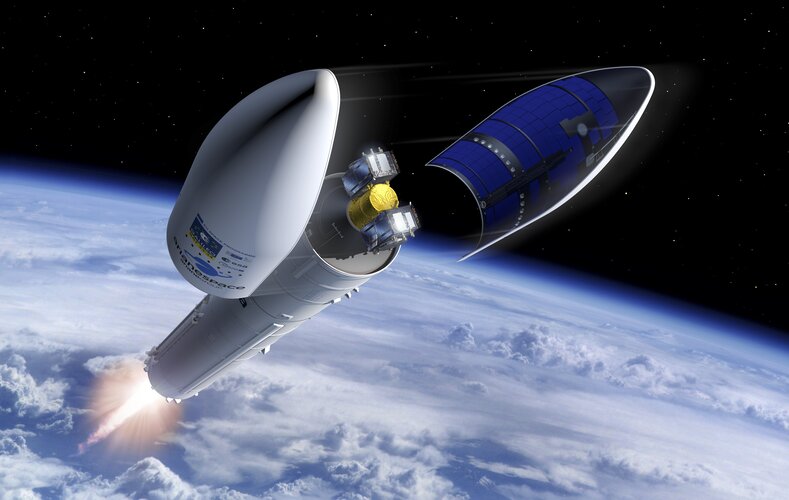
On 17 December, two Galileo satellites will be launched on an Ariane 6 rocket from Europe’s Spaceport in French Guiana in the 14th launch of operational satellites for the Galileo programme. This will be Galileo’s first launch on Ariane 6 and the fifth launch of Europe’s heavy-lift launcher.
Galileo pre-launch media briefing
9.12.2025 12:00 Video:
00:42:04
Video:
00:42:04
Watch the replay of the media briefing held ahead of the 14th operational launch of the Galileo programme. The briefing covers the mission details for the launch of two Galileo satellites, which are set to lift off on 17 December aboard Ariane 6 from Europe’s Spaceport in French Guiana.
The 30-year journey of European satellite navigation
4.12.2025 10:02
In 2025, Europe celebrated the 30th anniversary of satellite navigation on the continent, a milestone built on decades of innovation, collaboration and excellence. Three decades of challenges and triumphs that have shaped the navigation systems we rely on today: EGNOS and Galileo, and that serve as legacy to building the satellite navigation systems of tomorrow.
Follow the Galileo launch (L14) campaign
28.11.2025 15:07
On 17 December, two Galileo satellites will be launched on Ariane 6 from Europe’s Spaceport in French Guiana in the 14th operational launch of the Galileo programme. These satellites will improve the precision, availability and robustness of the Galileo system by adding spares to guarantee the system can always provide a navigation signal for users worldwide. This will be Galileo’s first launch on Ariane 6 and the fifth launch of Europe’s heavy-lift launcher.
European satellite navigation opens new chapter at ESA’s Ministerial Council
27.11.2025 15:16
The European Space Agency’s (ESA) Directorate of Navigation was pledged close to €1 billion by the Agency’s Member States during this week’s ESA Council at Ministerial Level (CM25) on 26 and 27 November in Bremen, Germany.
With the continuation and expansion of the NAVISP and FutureNAV programmes and three brand new missions, ESA’s Navigation Directorate experienced a significant boost to its optional programmes, with activities that are designed to shape the future of European navigation.
Galileo to take its first flight on Ariane 6 on 17 December
20.11.2025 10:31
On 17 December 2025, two Galileo satellites will be launched by Arianespace on Ariane 6 from Europe’s Spaceport in French Guiana. This 14th operational launch in the Galileo programme will improve the precision, availability and robustness of the Galileo system. These satellites will benefit the billions of people who use Galileo daily via their smartphone as well as key sectors such as critical infrastructure, autonomous driving, air traffic, maritime, agriculture, emergency services and rescue operations.
ESA Navigation at 2025 Ministerial Council
19.11.2025 16:30
The European Space Agency’s Navigation programmes are Europe’s driving force for performance, innovation and resilience in positioning, navigation and timing. At the upcoming ESA Ministerial Council (CM25), ESA Navigation presents a portfolio of activities designed to ensure that Europe’s satellite navigation capabilities remain reliable, competitive and strategically autonomous for decades to come.
Galileo, advancing toward the future
19.11.2025 14:00 Video:
00:02:09
Video:
00:02:09
Since becoming operational in 2016, Galileo has continued to evolve, introducing new capabilities and services to meet the needs of its over five billion users.
This December, two new Galileo satellites will launch aboard Ariane 6 - a major step for Europe’s autonomy and resilience in space.
And the journey doesn’t stop there: twelve Galileo Second Generation satellites are under construction, set to deliver even faster, more reliable positioning, navigation, and timing for everyone, everywhere.
ESA drives growth in Spanish positioning and timing industry with NAVISP
13.10.2025 11:33
Following a call by the European Space Agency (ESA), nine projects have been selected in close coordination with the Spanish Space Agency (AEE) for funding under ESA’s Navigation Innovation and Support Program (NAVISP). This initiative strengthens Spain’s industrial competitiveness in positioning, navigation and timing (PNT) with the development of new products and services and strengthens the country’s presence in the global space market.
Navigating through interference at Jammertest
6.10.2025 13:11
Satellite navigation is essential to everything from tracking your morning jog to landing air ambulances. But as reliance on satellite navigation grows, so do the risks associated with its interruption, natural or intentional. In its pursuit of strengthening European resilience in navigation, the European Space Agency (ESA) took part in Jammertest.
Galileo R&D tests new uplink antenna
25.9.2025 11:52
Galileo relies on ground-based uplink stations (ULS) to maintain accurate positioning for users worldwide. These stations transmit essential data to the satellites, including the information required to compute the satellites' orbits and clock corrections. Traditionally, such messages are sent using dish antennas. However, a new type of ground uplink antenna – a phased array antenna – was recently tested at the European Space Agency’s (ESA) site in Redu, Belgium. Developed under ESA's Horizon 2020 programme for R&D, which aims to keep Galileo up to date with the latest innovations, this innovative antenna could benefit Galileo operations.
Europe celebrates 30 years of satellite navigation
12.9.2025 9:10
On 2 September 2025, the European Space Agency (ESA) opened the doors of ESTEC, its research and technology centre, to celebrate 30 years of European satellite navigation. Partners from across the continent gathered for a sensational event that took the audience on a journey through time, honouring the achievements and collaboration that have shaped this success story.
Europe celebrates 30 years of satellite navigation
12.9.2025 9:10
On 2 September 2025, the European Space Agency (ESA) opened the doors of ESTEC, its research and technology centre, to celebrate 30 years of European satellite navigation. Partners from across the continent gathered for a sensational event that took the audience on a journey through time, honouring the achievements and collaboration that have shaped this success story.
Galileo ‘daughter mission’ name revealed: Celeste
4.9.2025 15:00
Following the announcement of the upcoming launch of LEO-PNT’s first satellites, ESA has now unveiled the name of the mission. Celeste, as it has been officially designated, will test the potential of a new, low Earth orbit layer of satellites to enhance Galileo’s resilience and complement its capabilities.
Galileo ‘daughter mission’ name revealed: Celeste
4.9.2025 15:00
Following the announcement of the upcoming launch of LEO-PNT’s first satellites, ESA has now unveiled the name of the mission. Celeste, as it has been officially designated, will test the potential of a new, low Earth orbit layer of satellites to enhance Galileo’s resilience and complement its capabilities.
ESA’s LEO-PNT satellites set to launch by end of year
25.6.2025 11:00
The European Space Agency (ESA) confirms the launch of the first two LEO-PNT satellites is planned from second half of December 2025, on a Rocket Lab Electron launcher vehicle, from New Zealand. The LEO-PNT in-orbit demonstrator mission is a pioneer mission for Europe that will advance satellite navigation concepts for resilient positioning and timing services.
ESA teams up with Leonardo against satnav jamming
16.6.2025 14:19Press Release N° 36–2025
Uninterrupted access to satellite navigation is essential in our modern world, but it is threatened daily by external interference, such as jamming and spoofing. New technologies and concepts can help increase the resilience of our satellite navigation solutions. ESA and Leonardo are embarking on a joint project to explore smart antennas powered by Machine Learning to block unwanted signals
ESA teams up with Leonardo against satnav jamming
16.6.2025 14:19Press Release N° 36–2025
Uninterrupted access to satellite navigation is essential in our modern world, but it is threatened daily by external interference, such as jamming and spoofing. New technologies and concepts can help increase the resilience of our satellite navigation solutions. ESA and Leonardo are embarking on a joint project to explore smart antennas powered by Machine Learning to block unwanted signals.
Galileo Second Generation developing at full speed
20.5.2025 15:31
The building of twelve Galileo Second Generation satellites is progressing rapidly, with several key milestones achieved in recent months. Among the most significant are the successful compatibility tests with ground infrastructure, an essential step as the satellites move through the production cycle.
Galileo Second Generation
19.5.2025 16:55 Video:
00:03:57
Video:
00:03:57
Europe’s Galileo is the world’s most precise satellite navigation system, providing metre-level accuracy to billions of users. ESA and European industry are preparing a new generation of satellites for the European Union, the Galileo Second Generation or G2, that will revolutionise the fleet with enhanced capabilities.
Thank you for your service, Galileo GSAT0104
13.5.2025 10:47
On 12 March 2013, Galileo satellite GSAT0104, alongside its fellow In-Orbit Validation (IOV) satellites, made history by enabling the first position fix by Europe’s independent satellite navigation system Galileo. Now, after 12 years of service mostly in the area of Search and Rescue, GSAT0104 makes history again by becoming the first satellite in the Galileo constellation to be decommissioned.
Decommissioning Galileo satellites - Infographic
13.5.2025 10:13 Image:
Decommissioning Galileo satellites - Infographic
Image:
Decommissioning Galileo satellites - Infographic
DORIS joins ESA’s Genesis mission
6.4.2025 20:37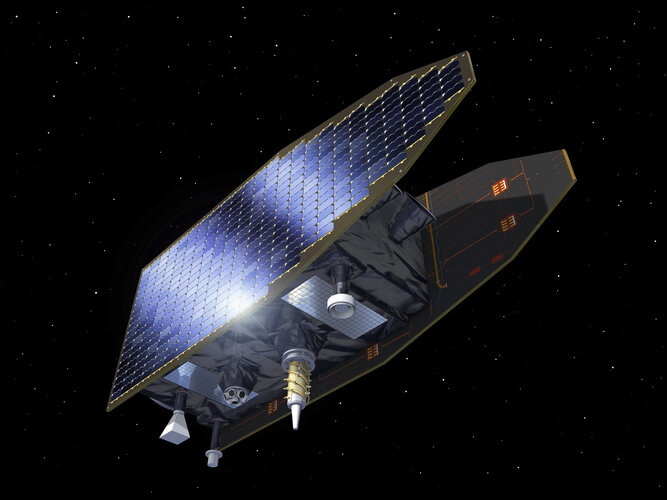
The second Genesis Science Workshop, held on 3 and 4 April in Matera, Italy, brought together the ESA Genesis team, industry experts and scientists from the international community to discuss the mission’s progress, including the latest satellite design evolutions, and prepare for the most extensive science exploitation possible. ESA and the French Space Agency CNES signed a contract during the event, confirming that the fourth geodetic technique, DORIS, will join the mission.
ESA’s NavLab on wheels: an Arctic mission
13.3.2025 10:02
High above the Arctic Circle, on the rugged terrain of Andøya, three ESA radionavigation engineers take a rare moment to unwind with a game of shuffleboard. Outside, sheep graze under the shimmering northern lights, a serene backdrop to their demanding mission: test how navigation technologies withstand interference signals. With 100TB of data collected over 5 days, their efforts promise to strengthen the reliability of satellite navigation for the benefit of us all.
ESA signs new chip development for more resilient satnav
5.3.2025 10:00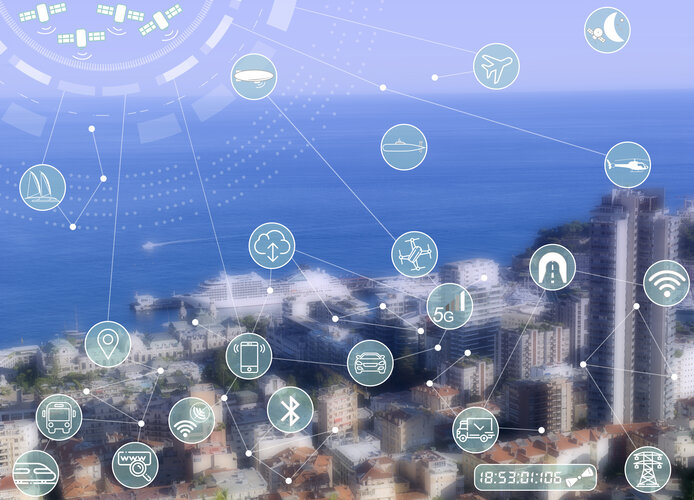
It is impossible to imagine our everyday lives – and Europe’s economy – without reliable satellite navigation. Accordingly, ESA prioritises developing and delivering more resilient positioning, navigation and timing technologies and systems into the future. NAVISP Industry Days saw the signing of an industrial contract between ESA and UK’s EnSilica Plc to develop a novel multi-band radio frequency receiver on a single chip, designed to simultaneously receive dual signal streams from all current and future satnav constellations to help overcome interference.
Call for information on low Earth orbit navigation
7.2.2025 16:39
The European Space Agency (ESA) is issuing a Request for Information (RFI) via OSIP for European industry to show interest and provide information on satellite technology that could enable the proposed next phase of ESA's LEO-PNT (Low Earth Orbit Positioning Navigation and Timing) programme, focused on industrialisation and in-orbit validation. ESA is looking to learn about production capability of payload building blocks and suitable off-the-shelf satellite platforms to accommodate them.
ESA to develop optical technology for navigation
7.2.2025 16:29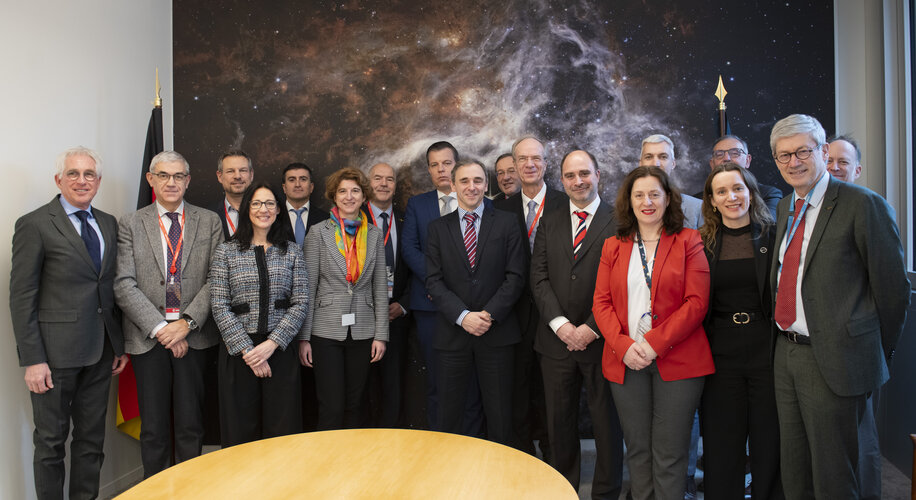
Optical technology has the potential to revolutionise the field of positioning, navigation and timing. To drive the development of this technology, ESA has signed a contract with a consortium of European companies that will conduct a definition study (Phase A/B1) and associated critical technology predevelopment.
This is the first step toward a potential in-orbit demonstrator for optical time synchronisation and ranging (OpSTAR) that will be proposed at the ESA Council at Ministerial Level in November 2025, to validate intersatellite optical links before future use in operational satellite navigation systems.
Galileo sites from pole to tropics begin migration
5.2.2025 15:24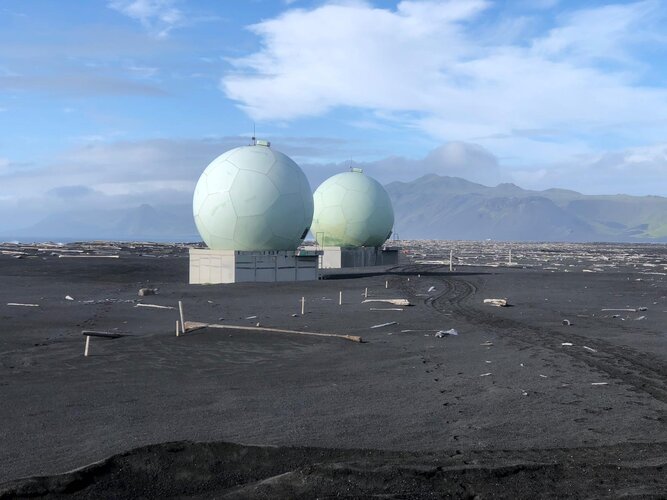
In a landmark achievement, ESA successfully migrated Galileo’s Control Centres in a highly complex operation involving over 200 people from the Agency, industry and EUSPA. This milestone marked the beginning of a global operation to upgrade Galileo’s entire Ground Segment, a vast network of stations spread around the world.
Satnav summer school open for registrations
20.1.2025 9:03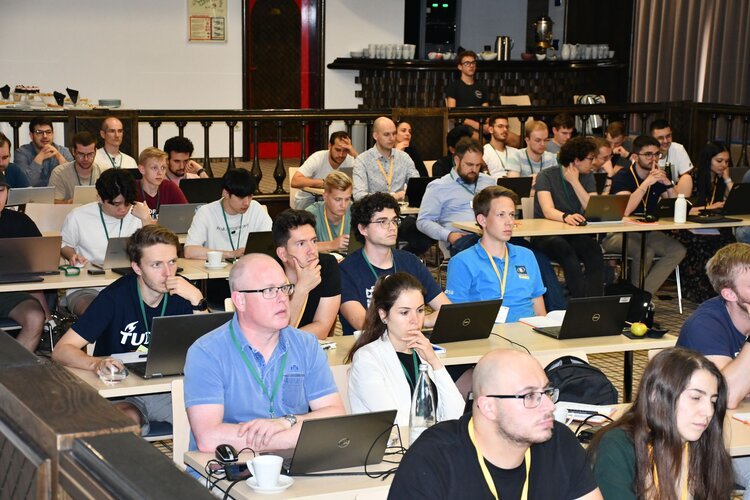
Are you a young researcher in the field of satellite navigation? Learn from top-notch experts and expand your network at this year’s ESA-JRC International Summer School on Global Navigation Satellite Systems, taking place this July in Arachova, Greece.
Join ESA FutureNAV Industry Day 2025
13.12.2024 10:04
The first FutureNAV Industry Day, on 18 February 2025, will bring together European stakeholders in satellite navigation to explore the future of positioning, navigation and timing (PNT) technologies. This gathering will spotlight emerging opportunities and foster a network of European companies in the PNT and GNSS sector. Don't miss this chance - secure your spot by registering here.
Seven ways navigation tech contributes to sustainability
25.10.2024 10:50
What does satellite navigation have to do with sustainable development? Quite a lot, in fact. Satnav and other positioning, navigation and timing (PNT) technologies provide critical data that support green solutions across numerous sectors. From enabling smart mobility to optimising energy grids and facilitating precision farming, the potential for PNT to drive sustainability is immense.
ESA's Moonlight programme: Pioneering the path for lunar exploration
15.10.2024 11:58
Imagine a near future where services such as satellite navigation, video conferencing, and file sharing are as seamless on the Moon as they are on Earth.
Navigation tech for the future of mobility
14.10.2024 13:49
Where would we be without our GNSS-enabled car navigation systems or navigation apps on our smartphone? Space technology, particularly global navigation satellite systems like the European Galileo, is the backbone of today's mobility and transport.
But are current technologies and systems enough to meet the evolving mobility needs of the future? The European Space Agency is closely monitoring emerging technology trends and staying ahead of the curve, designing and developing the future of Galileo and EGNOS, and conceiving new missions and programmes so that European space technology continues to serve the demands of an increasingly interconnected and mobile world.
Navigation tech for the future of mobility
14.10.2024 13:49
Where would we be without our GNSS-enabled car navigation systems or navigation apps on our smartphone? Space technology, particularly global navigation satellite systems like the European Galileo, is the backbone of today's mobility and transport.
But are current technologies and systems enough to meet the evolving mobility needs of the future? The European Space Agency is closely monitoring emerging technology trends and staying ahead of the curve, designing and developing the future of Galileo and EGNOS, and conceiving new missions and programmes so that European space technology continues to serve the demands of an increasingly interconnected and mobile world.
Two new satellites added to Galileo constellation for increased resilience
17.9.2024 14:49
The European Galileo satellite navigation system Galileo keeps growing: a new pair of satellites has joined the constellation after a journey on a Falcon 9 rocket, launched from the Kennedy Space Center in Florida on 18 September at 00:50 CEST (17 September 18:50 local time).
Two new satellites added to Galileo constellation for increased resilience
17.9.2024 14:49
The European Galileo satellite navigation system keeps growing: a new pair of satellites has joined the constellation after a journey on a Falcon 9 rocket, launched from the Kennedy Space Center in Florida on 18 September at 00:50 CEST (17 September 18:50 local time).
Two new satellites added to Galileo constellation for increased robustness
17.9.2024 14:49
The European Galileo satellite navigation system keeps growing: a new pair of satellites has joined the constellation after a journey on a Falcon 9 rocket, launched from the Kennedy Space Center in Florida on 18 September at 00:50 CEST (17 September 18:50 local time).
New Galileo satellites operational after successful in-orbit testing
5.9.2024 17:00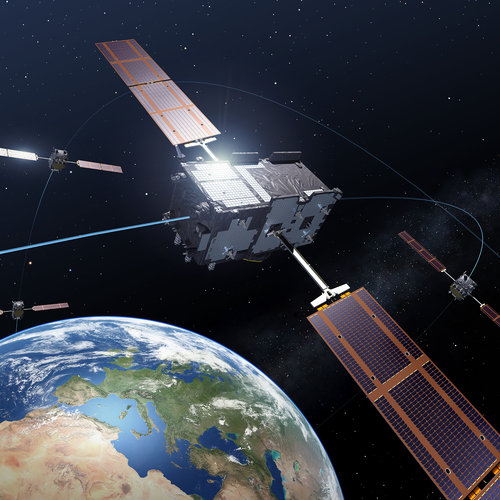
The two new Galileo satellites launched in April have entered service, completing the second of three constellation planes. With every addition to the constellation, the precision, availability and robustness of the Galileo signal is improved. The next launch is planned in the coming weeks and the remaining six Galileo First Generation satellites will join the constellation in the next years.
New Galileo satellites operational after successful in-orbit testing
5.9.2024 17:00
The two new Galileo satellites launched in April have entered service, completing the second of three constellation planes. With every addition to the constellation, the precision, availability and robustness of the Galileo signal is improved. The next launch is planned in the coming weeks and the remaining six Galileo First Generation satellites will join the constellation in the next years.
Satnav enables medical and emergency response
17.7.2024 11:35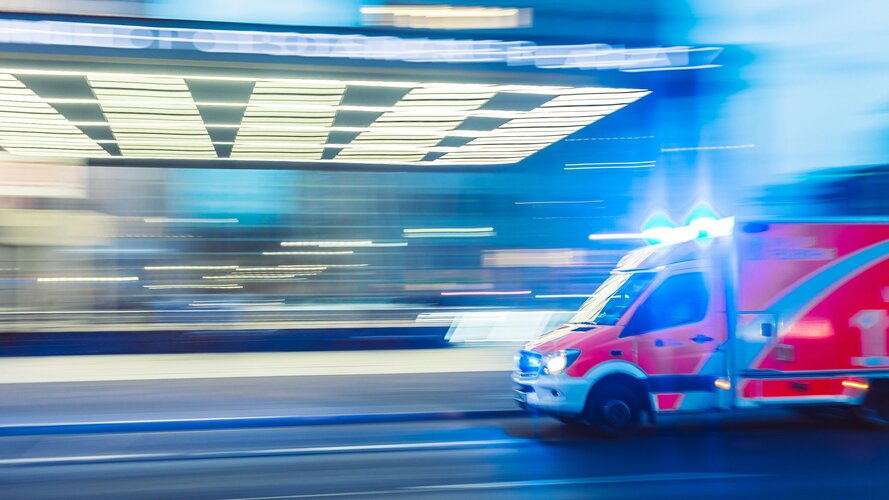
Satellite navigation is not just about travel directions; its applications extend to search and rescue operations, agriculture, autonomous vehicles, sports and perhaps surprisingly, even health. ESA's NAVISP programme supports European companies in the creation of satnav-powered solutions with all sorts of applications – among them, emergency response and healthcare.
Call for ideas on navigation demonstrators and technologies
8.7.2024 14:13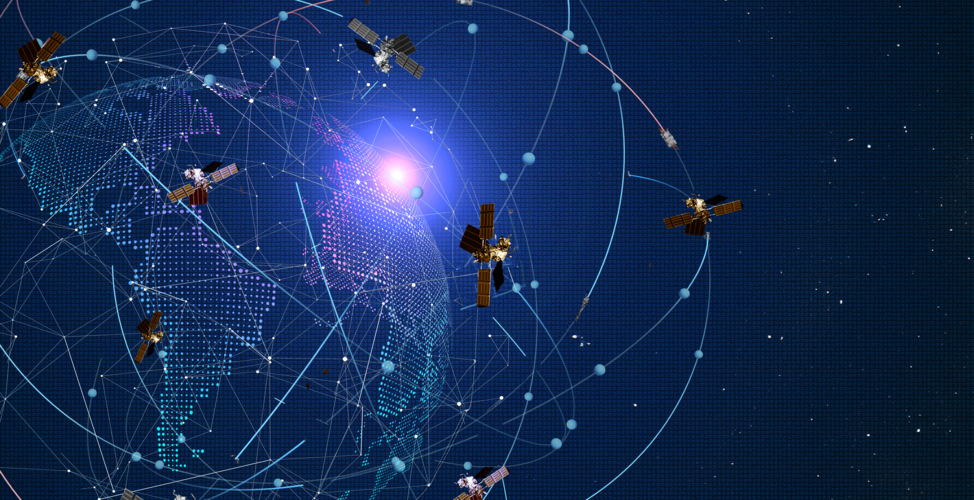
Do you want to help shape the future of European satellite navigation? ESA is issuing an open call via OSIP for companies and researchers to help identify future navigation demonstrators and disruptive technologies that will shape the landscape of satellite navigation in the coming decades.
Green light for Galileo Second Generation satellite design
12.6.2024 9:40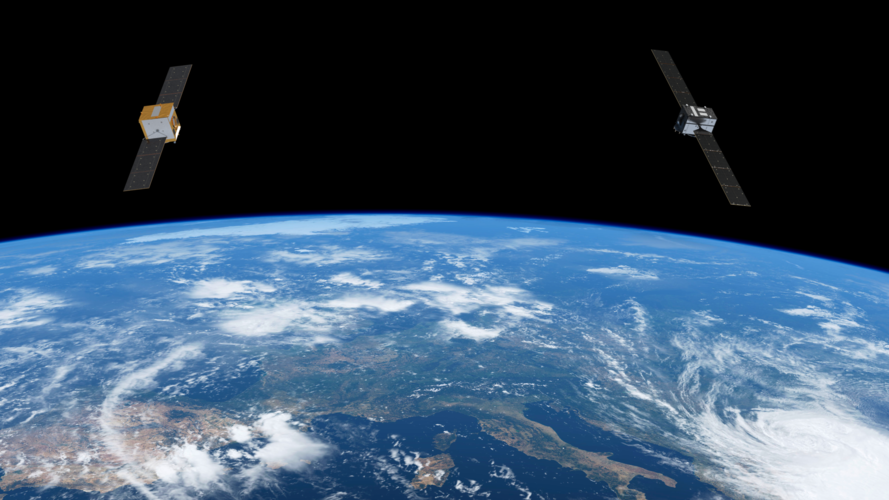
Production of Galileo Second Generation satellites advances at full speed after two independent Satellite Critical Design Review boards have confirmed that the satellite designs of the respective industries meet all mission and performance requirements. This achievement is another crucial milestone hit on time in the ambitious schedule to develop the first 12 satellites of the Galileo Second Generation fleet.
Europe’s largest ground segment updated with no user impact
29.5.2024 15:47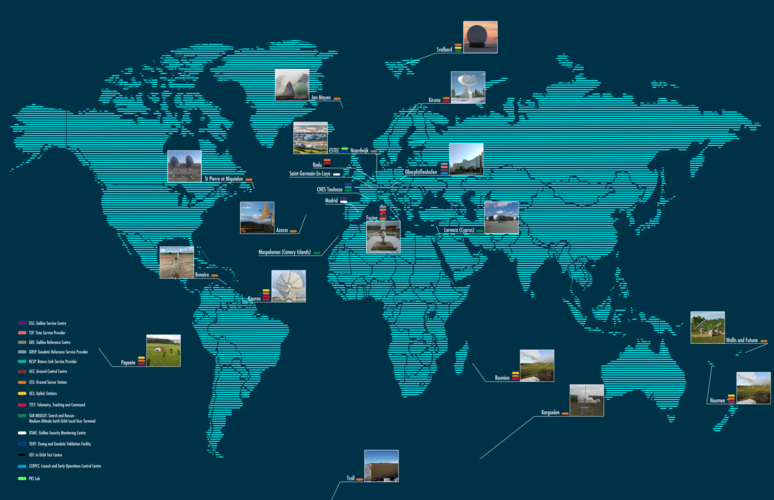
Over 200 dedicated professionals from ESA, EUSPA and European industry across four Galileo centres and seven external entities have seamlessly upgraded Galileo’s massive ground segment. In a remarkable feat of coordination and precision involving the deployment of 400 items, and after five months of rehearsals, Galileo’s ground segment, the largest in Europe, has transitioned seamlessly to System Build 2.0.
Two new satellites join the Galileo constellation
29.4.2024 12:00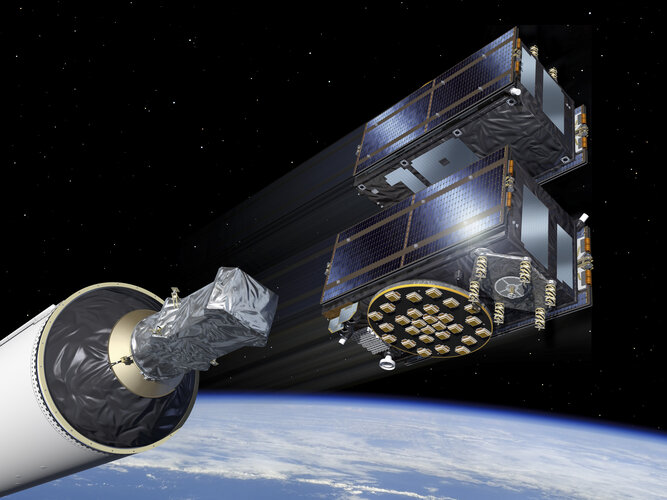
The European Galileo navigation system has two more satellites in orbit following their launch on a SpaceX Falcon 9 in the early morning of Sunday, 28 April, at 01:34 BST/02:34 CEST. With 30 satellites now in orbit, Galileo is expanding its constellation, increasing the reliability, robustness and, ultimately, the precision, benefiting billions of users worldwide.
Two new satellites join the Galileo constellation
29.4.2024 12:00
The European Galileo navigation system has two more satellites in orbit following their launch on a SpaceX Falcon 9 in the early morning of Sunday, 28 April, at 01:34 BST/02:34 CEST. With 30 satellites now in orbit, Galileo is expanding its constellation, increasing the reliability, robustness and, ultimately, the precision, benefiting billions of users worldwide.
Two new satellites join the Galileo constellation
29.4.2024 12:00
The European Galileo navigation system has two more satellites in orbit following their launch in the early morning of Sunday, 28 April, at 01:34 BST/02:34 CEST. With 30 satellites now in orbit, Galileo is expanding its constellation, increasing the reliability, robustness and, ultimately, the precision, benefiting billions of users worldwide.
Six mind-blowing facts about Galileo
16.4.2024 13:40
Did you know Galileo was born in the Netherlands in the 1990s? Europe’s own global navigation satellite system was developed in ESA’s technological heart, ESTEC, in Noordwijk, almost three decades ago. Since then, it has grown to become one of the most complex and critical infrastructures ever built in Europe, as well as the largest European satellite constellation and ground segment.
Galileo Second Generation
2.4.2024 15:17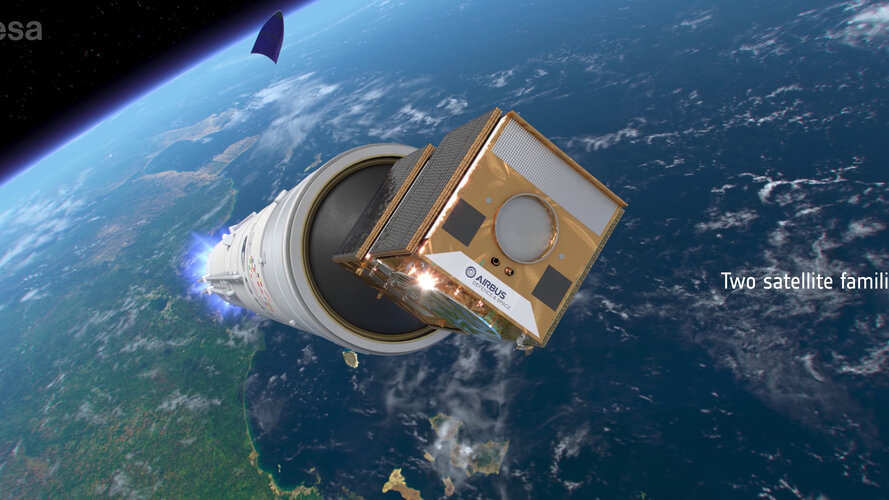 Video:
00:03:53
Video:
00:03:53
Europe’s Galileo is the world’s most precise satellite navigation system, providing metre-level accuracy to billions of users. ESA and European industry are preparing a new generation of satellites, the Galileo Second Generation or G2, that will revolutionise the fleet with enhanced capabilities.
Navigation Training Course now open for application
27.3.2024 10:01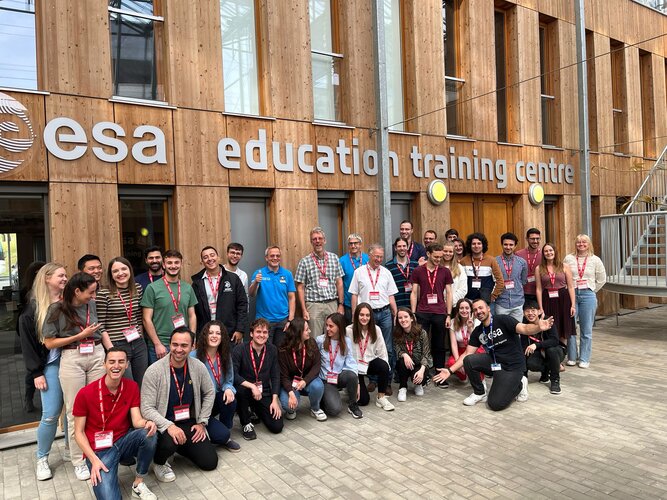
ESA Academy is calling on university students to apply for the Navigation Training Course to be held from 24 to 28 June 2024 at ESA Academy’s Training and Learning Facility in ESEC-Galaxia, Belgium. This Training Course is a collaboration between ESA Education and ESA’s Directorate of Navigation. Would you like to know more about the future of satellite navigation? Apply for our course today!
ESA kicks off two new navigation missions
18.3.2024 15:06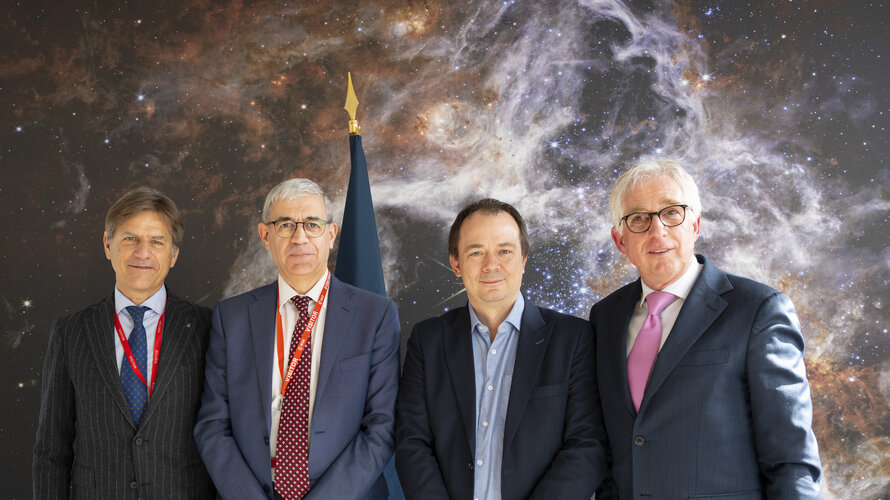
ESA has signed contracts with several European companies for an overall amount of € 233 million to develop Genesis and a LEO-PNT demonstrator, two new missions within the FutureNAV programme that will keep Europe at the forefront of satellite navigation worldwide.
ESA kicks off two new navigation missions
18.3.2024 15:06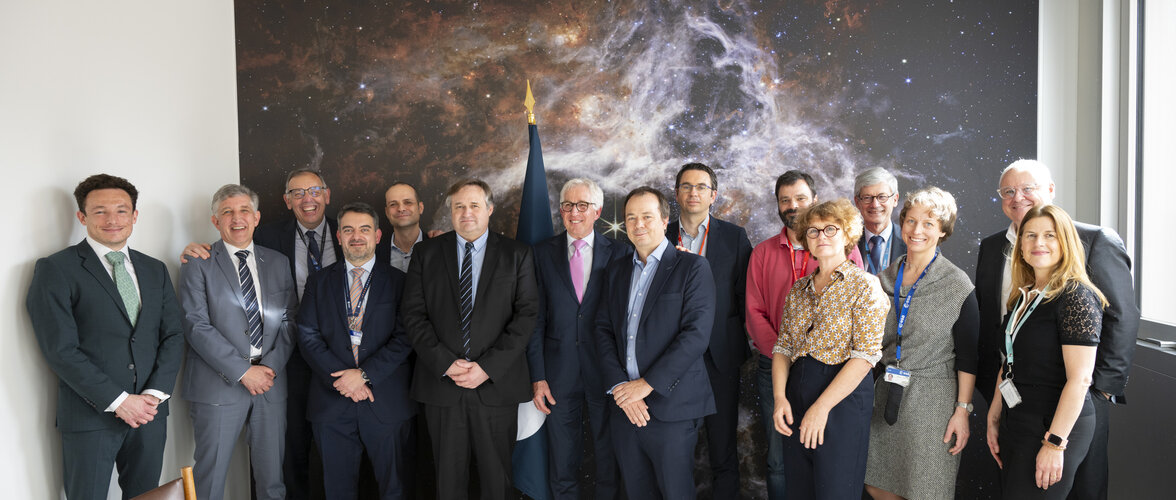
ESA has signed contracts with several European companies for an overall amount of € 233 million to develop Genesis and a LEO-PNT demonstrator, two new missions within the FutureNAV programme that will keep Europe at the forefront of satellite navigation worldwide.
ESA kicks off two new navigation missions
18.3.2024 15:06
ESA has signed contracts with several European companies for an overall amount of € 233 million to develop Genesis and a LEO-PNT demonstrator, two new missions within the FutureNAV programme that will keep Europe at the forefront of satellite navigation worldwide.
ESA kicks off two new navigation missions
18.3.2024 15:06
ESA has signed contracts with several European companies for an overall amount of € 233 million to develop Genesis and a LEO-PNT demonstrator, two new missions within the FutureNAV programme that will keep Europe at the forefront of satellite navigation worldwide.
ESA kicks off two new navigation missions
18.3.2024 15:06
ESA has signed contracts with several European companies for an overall amount of € 233 million to develop Genesis and a LEO-PNT demonstrator, two new missions within the FutureNAV programme that will keep Europe at the forefront of satellite navigation worldwide.
ESA kicks off two new navigation missions
18.3.2024 15:06
ESA has signed contracts with several European companies for an overall amount of € 233 million to develop Genesis and a LEO-PNT demonstrator, two new missions within the FutureNAV programme that will keep Europe at the forefront of satellite navigation worldwide.
Contract for new Galileo atomic clock tech signed
11.3.2024 13:55
ESA, on behalf of the European Commission, has signed a €12 million contract with Leonardo S.p.A (Italy) and Istituto Nazionale di Ricerca Metrologica to design and develop a new ultra-precise atomic clock technology for Galileo.
Contract for new Galileo atomic clock tech signed
11.3.2024 13:55
ESA, on behalf of the European Commission, has signed a €12 million contract with Leonardo S.p.A (Italy) and Istituto Nazionale di Ricerca Metrologica to design and develop a new ultra-precise atomic clock technology for Galileo.
The geodetic community meets Genesis
8.3.2024 11:45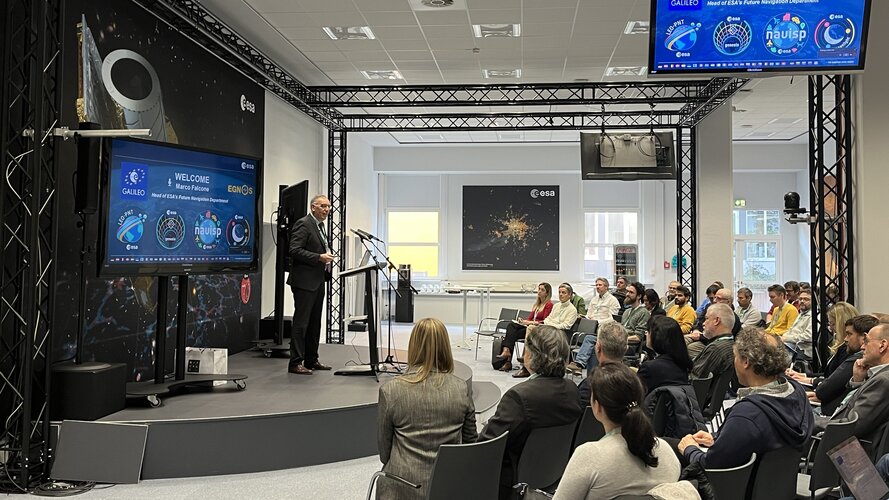
The first Genesis science workshop brought together the ESA project team and the scientific geodesy community to establish the Genesis Scientific Exploitation Team and to set the ground for future collaboration.
The geodetic community meets Genesis
8.3.2024 11:45
The first Genesis science workshop brought together the ESA project team and the scientific geodesy community to establish the Genesis Scientific Exploitation Team and to set the ground for future collaboration.
15th satnav summer school open for registrations
9.2.2024 8:48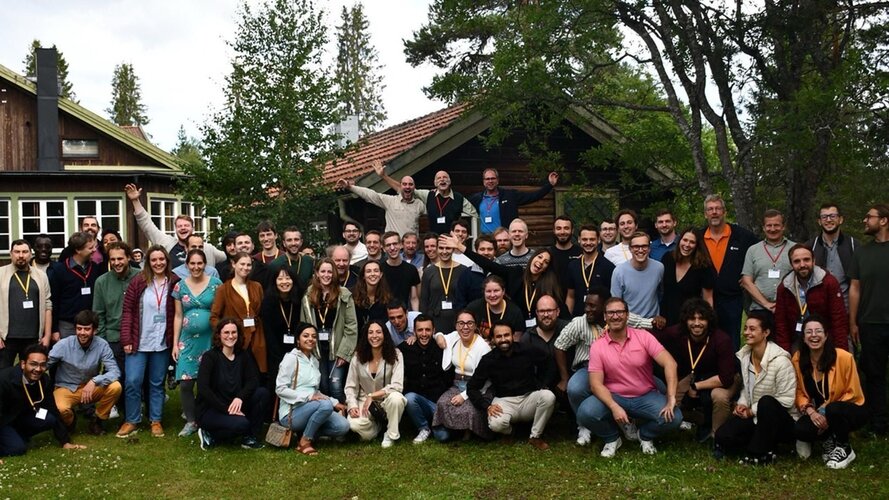
Are you a researcher in the field of satellite navigation? Register now for this year’s ESA-JRC International Summer School on Global Navigation Satellite Systems, taking place in Slovenia in July, to learn from top-notch experts and expand your network.
15th satnav summer school open for registrations
9.2.2024 8:48
Are you a young researcher in the field of satellite navigation? Register now for this year’s ESA-JRC International Summer School on Global Navigation Satellite Systems, taking place in Slovenia in July, to learn from top-notch experts and expand your network.
15th satnav summer school open for registrations
9.2.2024 8:48
Are you a researcher in the field of satellite navigation? Register now for this year’s ESA-JRC International Summer School on Global Navigation Satellite Systems, taking place in Slovenia in July, to learn from top-notch experts and expand your network.
Galileo, now fit for aviation
29.1.2024 14:20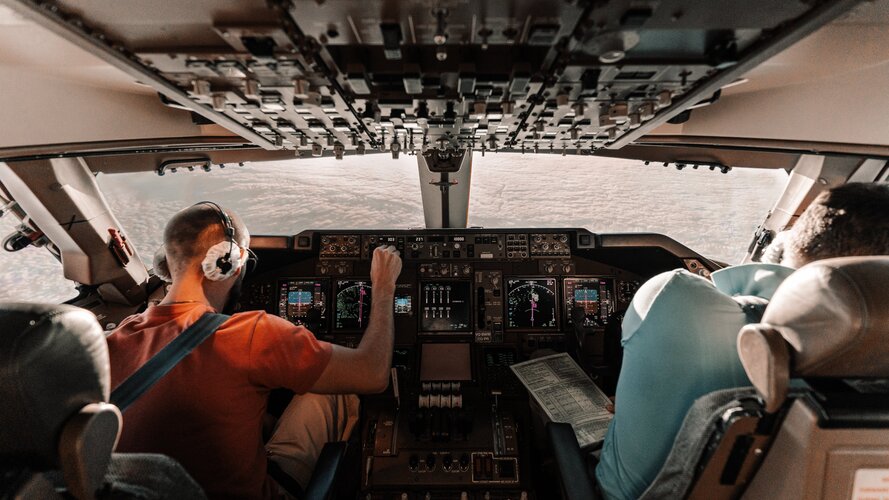
Galileo, already the world’s most precise satellite navigation system, now meets international standards to guide civil aviation from take-off to landing, complementing Europe’s EGNOS for the most critical operations. Galileo was not designed to comply with these strict safety requirements, so how did engineers at ESA achieve this feat? This is a tale of engineering excellence.
ESA’s NavLab drone
22.1.2024 10:00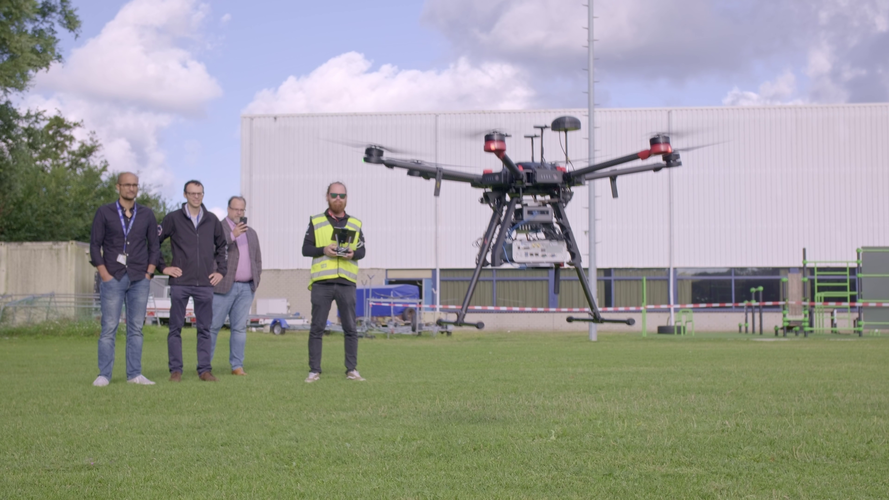 Video:
00:02:16
Video:
00:02:16
Based at the ESTEC technical centre in the Netherlands, ESA’s Navigation Laboratory has a high-flying new recruit: this drone can carry different types of satellite navigation receivers to collect data for follow-on analysis.
New instruments for Galileo’s tomorrow
14.12.2023 9:05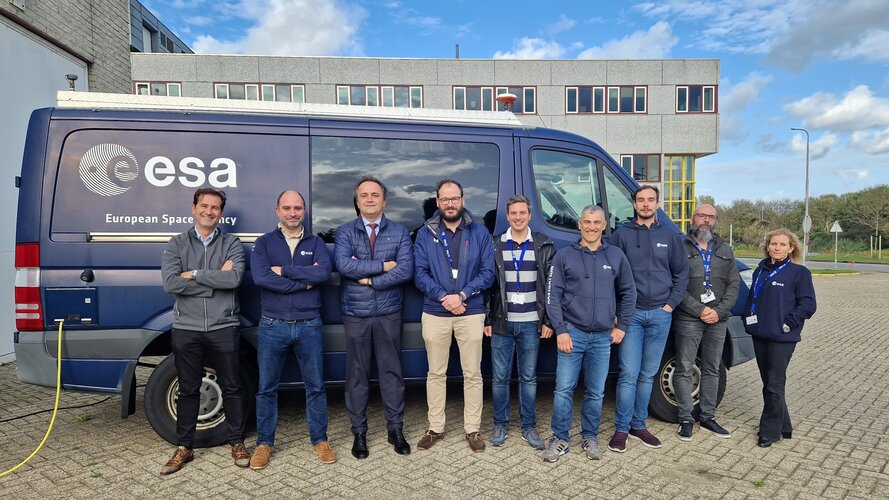
Galileo Second Generation is on the way with new and enhanced navigation satellites that will offer novel signals, services and even more precise positioning. But all the work being done to make it happen hinges on this single item at ESA’s Navigation Laboratory at ESTEC. The G2 test user receiver is designed to quantify the improvements the Second Generation will bring compared to current satellite navigation systems and will be used to verify the performance of early receivers processing the first G2 signals in space.
NAVISP Industry 2023 @ ESTEC
5.12.2023 18:00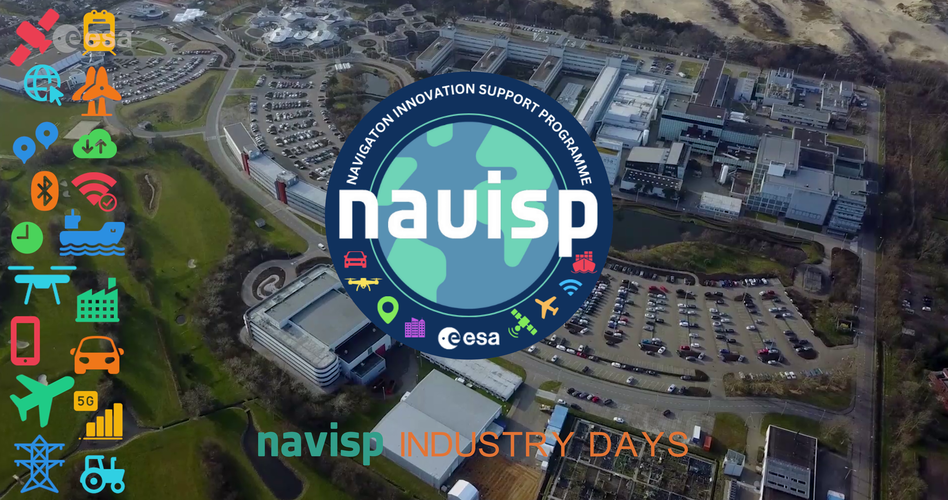 Video:
00:02:04
Video:
00:02:04
In November 2023, ESA hosted its annual NAVISP Industry Days event. This year, more than 200 positioning, navigation and timing (PNT) professionals from across Europe gathered at ESA’s Space Research and Technology Centre (ESTEC) in the Netherlands to explore together opportunities for innovation, commercialisation and collaboration via ESA’s Navigation Innovation and Support Programme (NAVISP).
For more information: visit https://navisp.esa.int
Galileo Second Generation satellites take shape
5.12.2023 13:10
To make the future of Galileo a reality, ESA and European industry are hard at work developing ultra-precise atomic clocks, system testbeds, ground mission and ground control segments and, of course, the satellites. Airbus Defence and Space, who is building six of the Galileo Second Generation constellation satellites, presented their first flight model structure to the programme’s stakeholders last week.
Navigation and telecommunications testbed vehicles
30.11.2023 9:18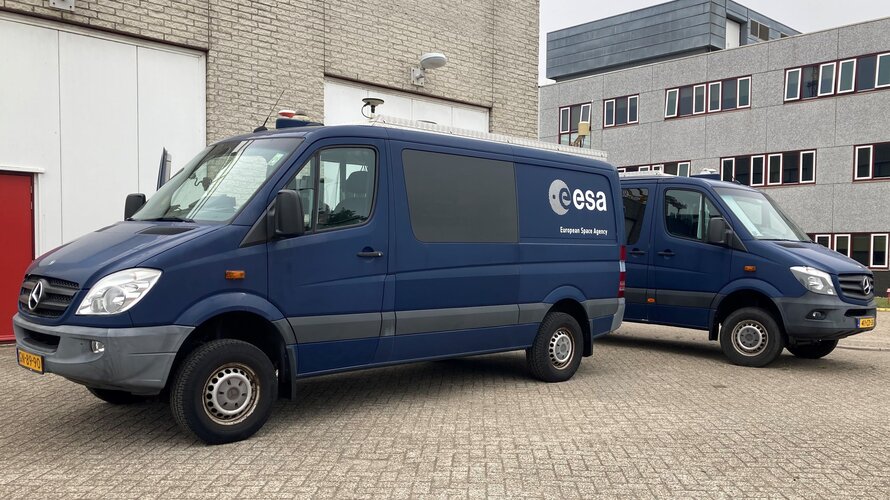
ESA’s navigation and telecommunications testbed vehicles are custom-built mobile test platforms operated by ESA’s Navigation Laboratory to support test campaigns for navigation and telecommunications services, most notably Europe’s Galileo constellation. Testing in the field provides a unique opportunity to complement laboratory tests, verifying the system’s performance from a user perspective in a more dynamic and realistic setting.
Unlocking Europe’s satellite navigation potential at NAVISP Industry Days
22.11.2023 9:23
Leading positioning, navigation and timing experts from companies and research institutions across Europe met last week at ESA’s NAVISP Industry Days, a two-day workshop dedicated to discussing trends and opportunities in this field.
Galileo Second Generation satellite aces first hardware tests
10.11.2023 9:20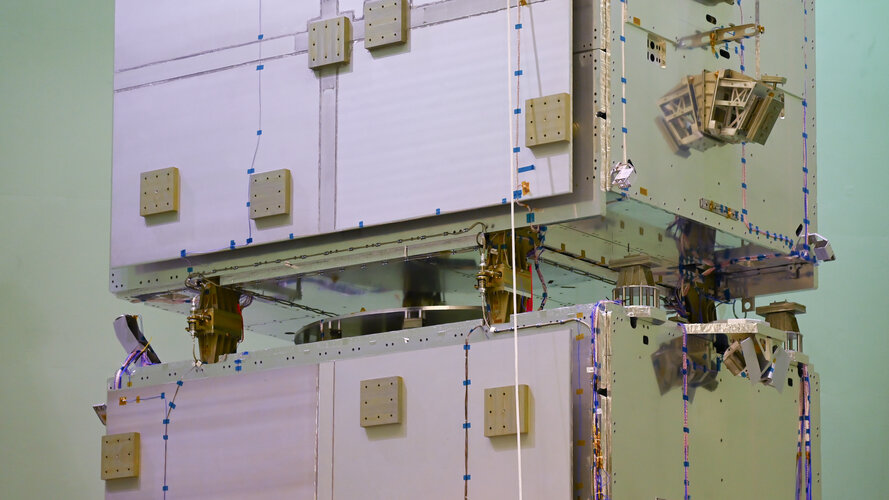
The new Galileo satellite model from Thales Alenia Space underwent mechanical and signal performance testing this summer at ESA’s ESTEC Test Centre. Structural models resisted launch-like noise and vibrations while an electrical model proved its ability to send Galileo signals - a major milestone in the development of Galileo’s Second Generation.
Satnav test on remote island lab
17.10.2023 14:45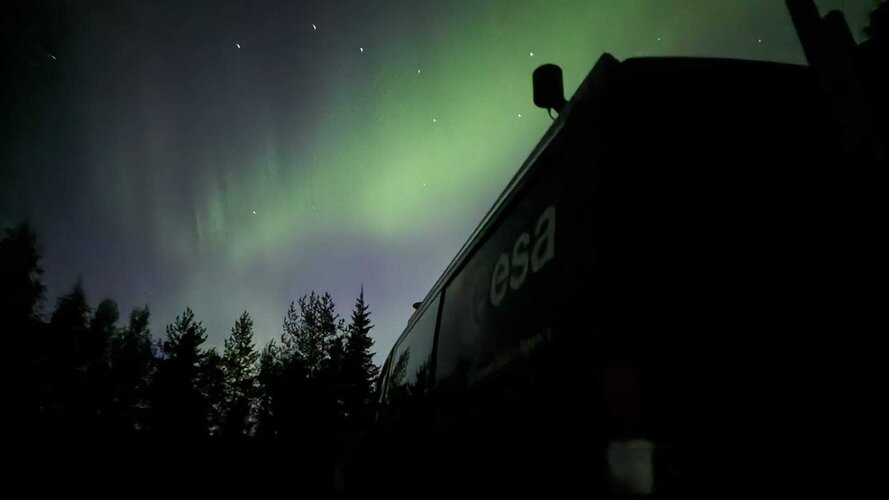
ESA’s navigation testbed vehicle participated in a campaign organised by Norwegian governmental authorities to assess the impact of jamming and spoofing on satnav systems and test innovative technologies for detection and mitigation.
Wanted: bright ideas to develop the lunar economy
9.10.2023 11:39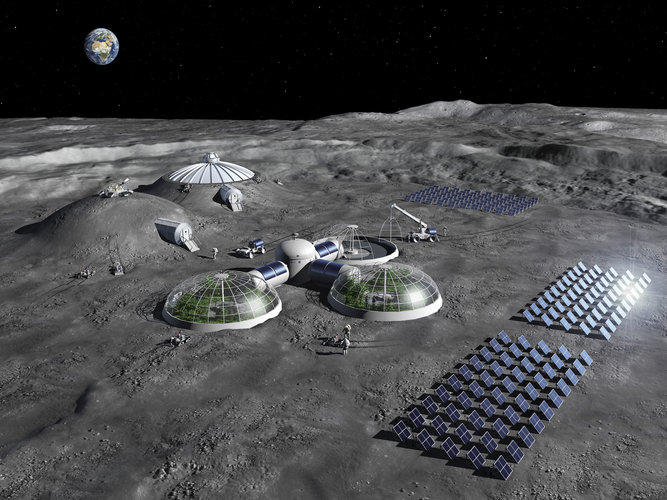
ESA is calling for visionary ideas for how to use a constellation of communication and navigation satellites around the Moon to establish lunar businesses – and unlock opportunities on Earth.
Harmonizing satnav for aviation: SBAS experts meet
6.10.2023 8:38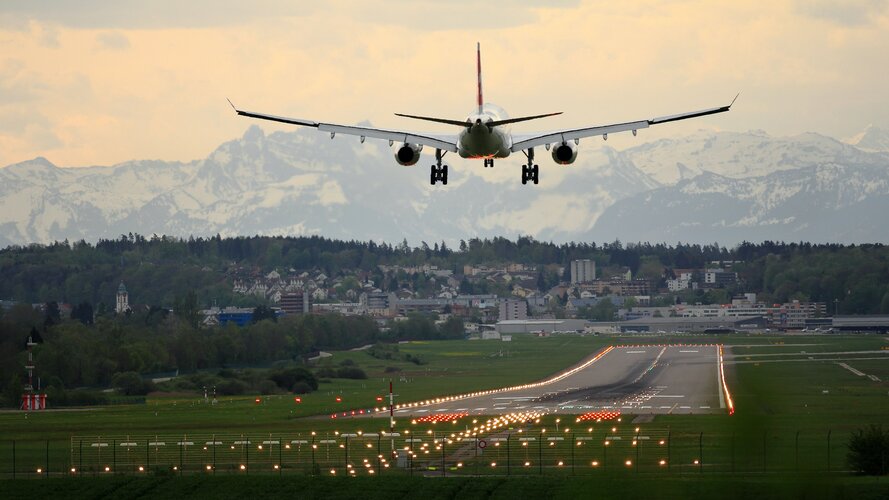
More than 150 000 aircraft and 5000 airports worldwide are equipped with Satellite-based Augmentation System (SBAS) technology for safer flying. Specialists overseeing these systems met from 19 to 21 September for the 38th SBAS Interoperability Working Group meeting, hosted by ESA in Toulouse, to coordinate efforts for seamless navigation.
NAVISP Industry Days 2023: register now
21.9.2023 14:57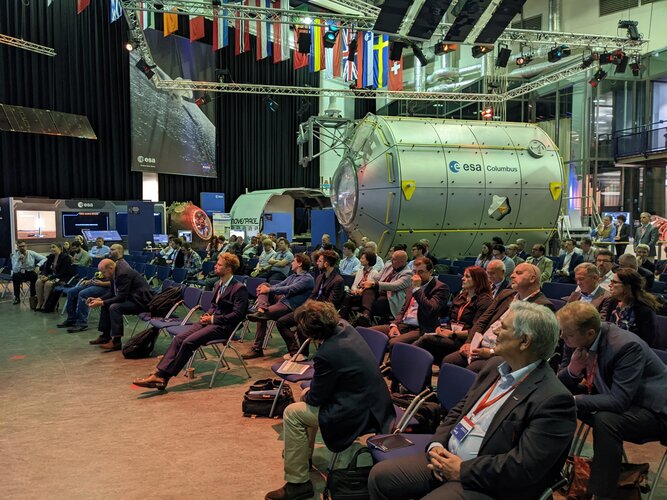
Are you part of the positioning, navigation and timing community and want to play a part in shaping the future of this transformative field? Register now for this year’s NAVISP Industry Days!
Galileo becomes faster for every user
11.9.2023 10:22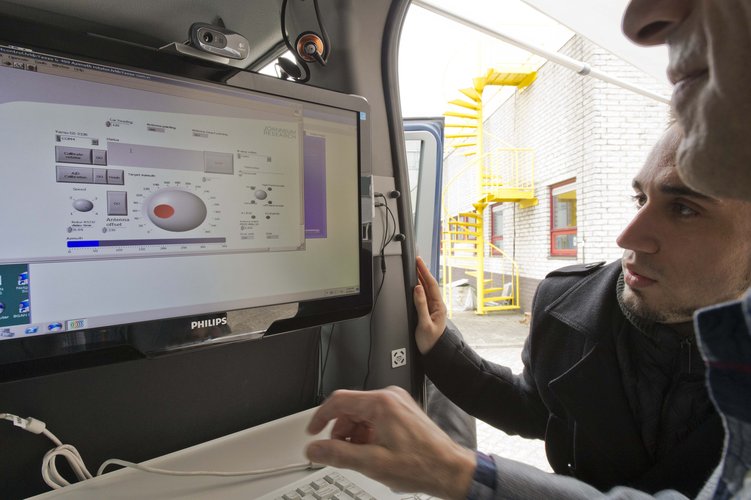
ESA satnav receiver vans – driving between the busy heart of Rotterdam, quiet countryside, and the Agency’s ESTEC technical centre – have confirmed that Galileo signals now provide a first position fix more rapidly, while also offering improved robustness in challenging environments and streamlined access to time information.
Just add AI for smarter satnav... from rogue drone detection to safer driving
3.8.2023 10:54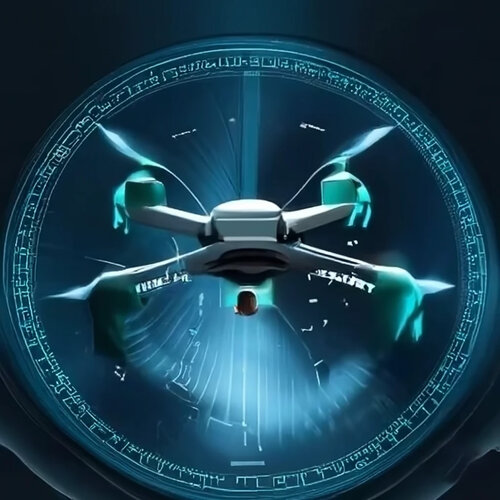
With our society producing more data than ever before, Artificial Intelligence, AI, is allowing us to gather, analyse and make use of it in novel ways, including in space programmes. Now AI is also being applied to satellite navigation by the engineering teams of ESA’s NAVISP programme, working with European industry and academia to invent the future of navigation. The result is a growing portfolio of prototype services, variously employed to improve space and Earth weather forecasting, enhance the performance of autonomous cars and boats, and help identify rogue drones in sensitive airspace.
Rescue drones tested within Italian volcanoes
21.7.2023 14:28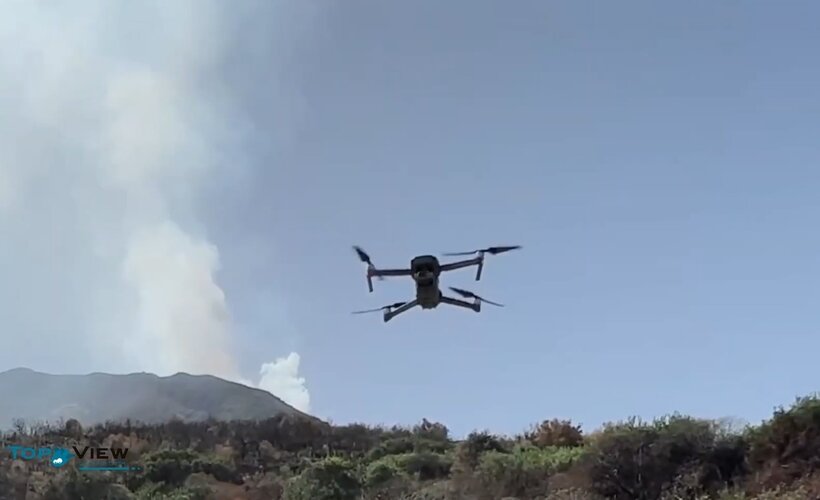
Interconnected drones have been dispatched into volcanic territory to test their use for civil protection, to help guide responses to natural disasters using novel PNT technology. The project, named Pathfinder, is supported through ESA’s Navigation Innovation and Support Programme, NAVISP. Two test campaigns have been undertaken to date, around the active Stromboli Island volcano and within the Astroni Nature Reserve, in a volcanic crater near Naples.
A look back at our first ESA Academy’s Navigation Training Course
7.7.2023 11:19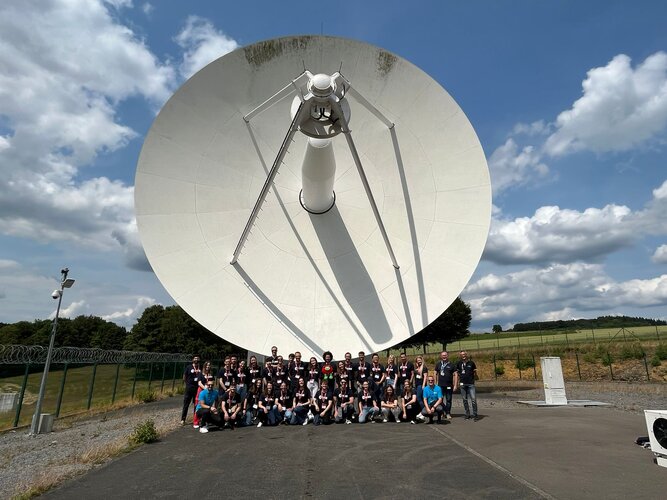
From 26 to 30 June, the first ESA Academy’s Navigation Training Course took place at ESEC-Galaxia, the European Space Security and Education Centre , in Belgium. Developed in collaboration with ESA’s Directorate of Navigation, the course attracted 30 Master and PhD students of 12 different nationalities from engineering and scientific subjects with basic knowledge of Navigation to enrich their university portfolio with a unique experience. Let’s have a look at the event and impressions from the participants!
Industry invited to bid for low-Earth orbit satnav demo
21.6.2023 14:35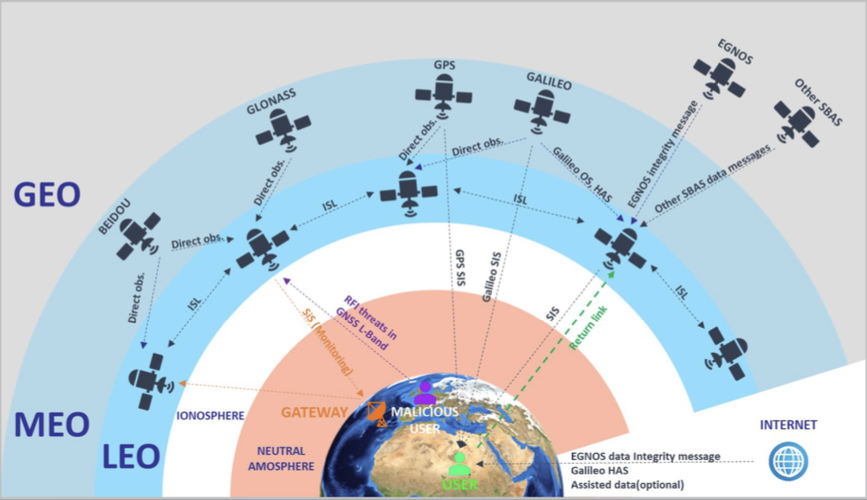
Europe’s Galileo constellation is already the world’s most accurate satellite navigation system, providing metre-level precision to users worldwide. The general expectation is that satnav is going to keep on getting better, in line with increasing user needs and accuracy requirements. But in fact, traditional Global Navigation Satellite Systems (GNSS) in medium Earth orbit are approaching their limits of technical performance.
Industry invited to bid for low-Earth orbit satnav demo
21.6.2023 14:35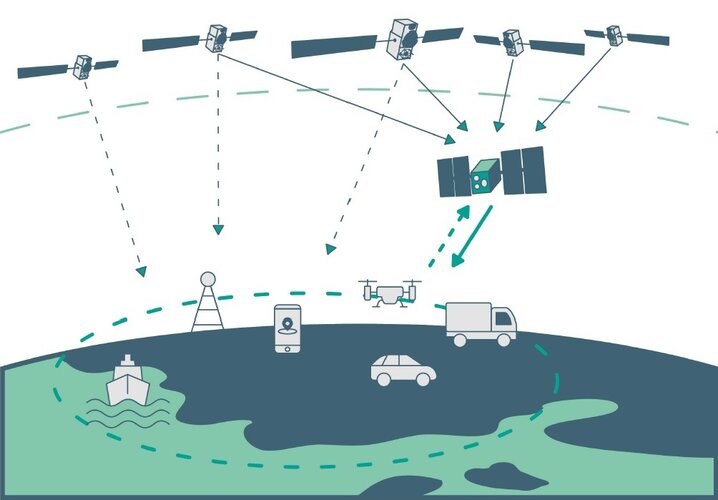
Europe’s Galileo constellation is already the world’s most accurate satellite navigation system, providing metre-level precision to users worldwide. The general expectation is that satnav is going to keep on getting better, in line with increasing user needs and accuracy requirements. But in fact, traditional Global Navigation Satellite Systems (GNSS) in medium Earth orbit are approaching their limits of technical performance.
European Navigation Conference at ESTEC discusses more resilient satnav
8.6.2023 14:35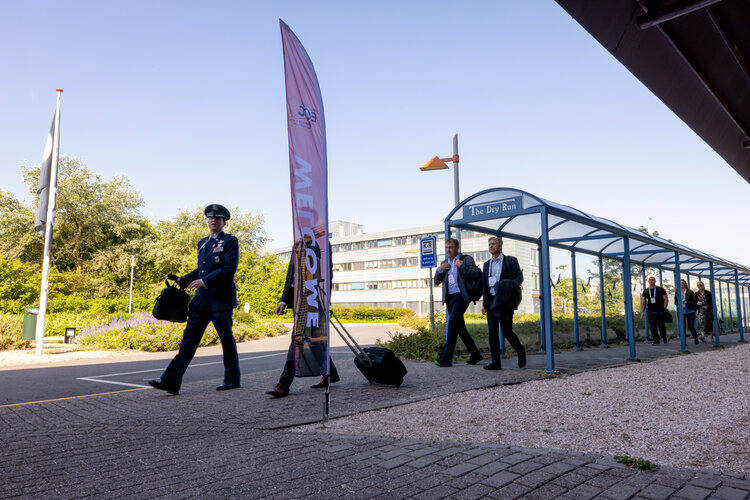
This year’s European Navigation Conference took place from 31 May to 2 June at ESA’s ESTEC technical centre in Noordwijk, home to the Agency’s navigation efforts. The ENC is organised each year under the umbrella the European Group of Institutes of Navigation (EUGIN) and this year by the Netherlands Institute of Navigation (NIN). Top of the list of discussion points? Enhancing the resilience of the positioning, navigation, and timing (PNT) systems all of us have come to depend on.
European Navigation Conference at ESTEC discusses more resilient satnav
8.6.2023 14:35
This year’s European Navigation Conference took place from 31 May to 2 June at ESA’s ESTEC technical centre in Noordwijk, home to the Agency’s navigation efforts. The ENC is organised each year under the umbrella the European Group of Institutes of Navigation (EUGIN) and this year by the Netherlands Institute of Navigation (NIN). Top of the list of discussions points? Enhancing the resilience of the positioning, navigation, and timing (PNT) systems all of us have come to depend on.
Galileo Second Generation enters full development phase
1.6.2023 9:35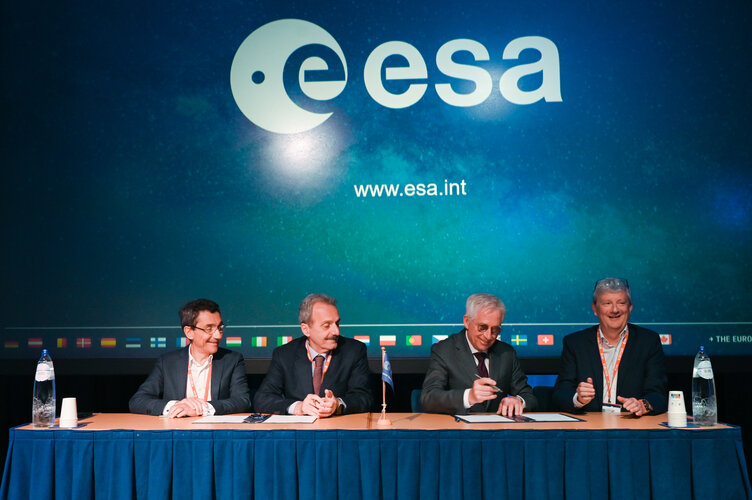
The main procurements batch of Galileo Second Generation initiated last summer has been finalised, leaving the system ready for its In Orbit Validation development phase. Today, following the opening session of the European Navigation Conference (ENC), ESA Director of Navigation Javier Benedicto invited Thales (Italy), Airbus Defence and Space (Germany) and Thales Six GTS (France) to sign the respective contracts commencing System Engineering Support for the next generation of Europe’s navigation satellite system.
Galileo Second Generation enters full development phase
1.6.2023 9:35
Update July 2023:
Three more contracts for Galileo’s Second Generation development have been signed by ESA, on behalf of EUSPA, with respectively GMV (Spain) for the Ground Control Segment, Thales (France) for Security Monitoring and Thales Alenia Space (France) on the Ground Mission Segment. In total, an amount of approximately €900 million has been awarded since summer 2022 which will lead forward the development of Galileo’s Second Generation to provide more robust, resilient, and new services in the near future for users worldwide.
Galileo Second Generation enters full development phase
31.5.2023 14:35
The main procurements batch of Galileo Second Generation initiated last summer has been finalised, leaving the system ready for its In Orbit Validation development phase. Today, following the opening session of the European Navigation Conference (ENC), ESA Director of Navigation Javier Benedicto invited Thales Alenia Space (Italy), Airbus Defence and Space (Germany) and Thales Six GTS (France) to sign the respective contracts commencing System Engineering Support for the next generation of Europe’s navigation satellite system.
GENESIS of a new Earth: join ESA’s Earth measurement mission
31.3.2023 13:41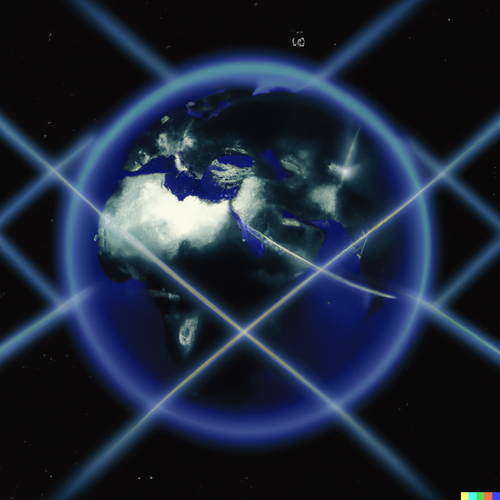
The idea behind ESA’s GENESIS mission is simple: a fixed framework is needed to chart the relative positions of locations across our planet, and satellites in orbit serve as the foundation of this framework. Fix a satellite’s own position in space accurately enough and you can measure Earth under it much more precisely too.
GENESIS of a new Earth: join ESA’s Earth measurement mission
31.3.2023 13:41
The idea behind ESA’s GENESIS mission is simple: a fixed framework is needed to chart the relative positions of locations across our planet, and satellites in orbit serve as the foundation of this framework. Fix a satellite’s own position in space accurately enough and you can measure Earth beneath it much more precisely too.
First ever ESA Academy Navigation Training Course!
24.3.2023 16:13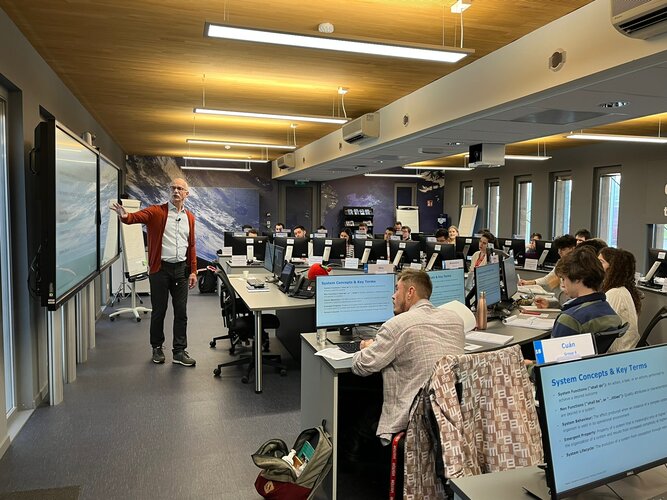
For the first time ever, ESA Academy is opening a call for university students to apply for the pilot edition of the Navigation Training Course, to be held from 26 to 30 June 2023 at ESA Academy’s Training and Learning Facility in ESEC-Galaxia, Belgium. This Training Course has been developed by ESA Education and ESA’s Directorate of Navigation. Would you like to know more about the future of satellite navigation? Apply for our course today!
Galileo: no way without time
10.3.2023 14:55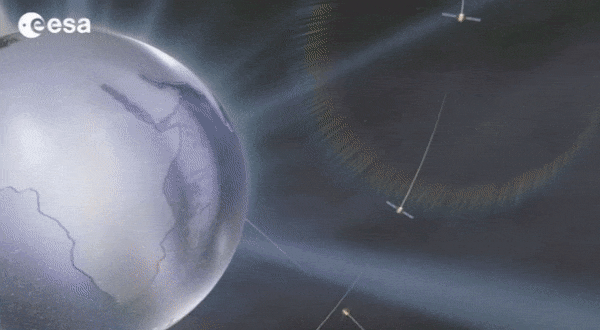
Europe’s Galileo is the world’s most precise satellite navigation system, providing metre-level accuracy and very precise timing to its four billion users. An essential ingredient to ensure this stays the case are the atomic clocks aboard each satellite, delivering pinpoint timekeeping that is maintained to a few billionths of a second. These clocks are called atomic because their ‘ticks’ come from ultra-rapid, ultra-stable oscillation of atoms between different energy states. Sustaining this performance demands, in turn, even more accurate clocks down on the ground to keep the satellites synchronised and ensure stability of time and positioning for users.
How does Galileo help other space missions?
9.3.2023 12:30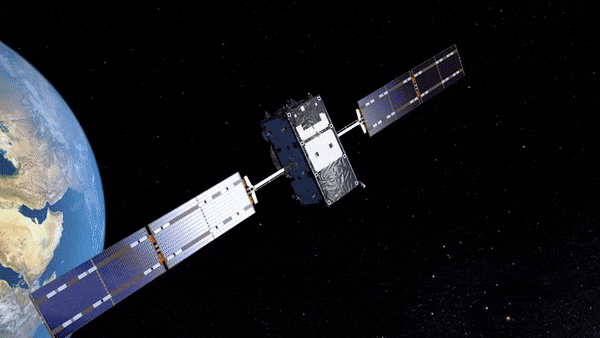
In 2023 satnav receivers are everywhere: in our phones, our cars, and drones, in fixed infrastructure, aboard boats, trains and aircraft. They are also in space: more than 95% of all the satellites in low-Earth orbit carry satnav receivers to calculate their position. The additional signals from Europe’s Galileo satellites are providing a big boost to the coverage, availability, redundancy, and accuracy of spaceborne receivers, in turn enlarging the possible scope of future missions, and extending the useful range of satnav much further out into space – to the Moon and beyond.
Navigation Lab exploring Galileo’s future – and beyond
8.3.2023 13:00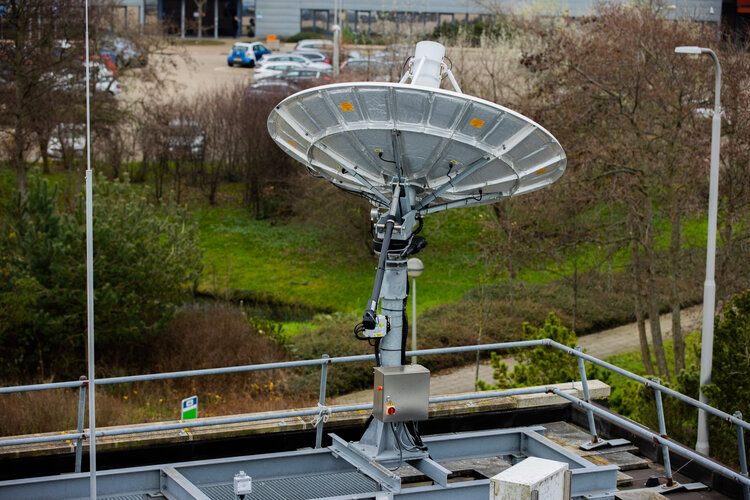
Would you like to know the future of satellite navigation? Try ESA’s Navigation Laboratory. This is a site where navigation engineers test prototypes of tomorrow's user receivers, using simulated versions of the navigation signals planned for the coming decade, such as set to be transmitted from Galileo’s Second Generation satellites.
Galileo, how you’ve grown
7.3.2023 10:59
Today Galileo is the world’s most precise satellite navigation system, delivering metre-level accuracy, and if you are a modern smartphone owner then you – like nearly four billion others around the world – are among its users. This week we are celebrating that almost exactly a decade ago, on 12 March 2013, Europe for the first time ever was able to determine a position on the ground using only its own independent navigation system, Galileo.
Galileo, how you’ve grown!
7.3.2023 10:59
Today Galileo is the world’s most precise satellite navigation system, delivering metre-level accuracy, and if you are a modern smartphone owner then you – like nearly four billion others around the world – are among its users. This week we are celebrating that almost exactly a decade ago, on 12 March 2013, Europe for the first time ever was able to determine a position on the ground using only its own independent navigation system, Galileo.
Telling time on the Moon
27.2.2023 14:30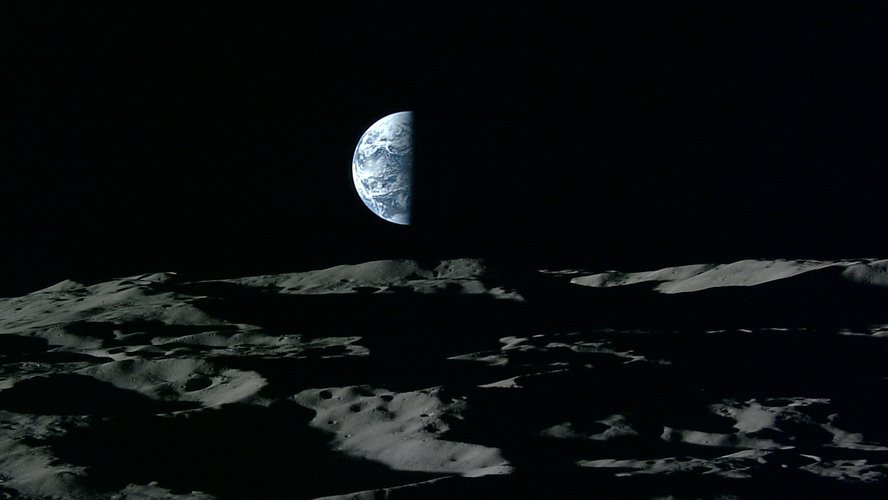
A new era of lunar exploration is on the rise, with dozens of Moon missions planned for the coming decade. Europe is in the forefront here, contributing to building the Gateway lunar station and the Orion spacecraft – set to return humans to our natural satellite – as well as developing its large logistic lunar lander, known as Argonaut. As dozens of missions will be operating on and around the Moon and needing to communicate together and fix their positions independently from Earth, this new era will require its own time.
ESA invites you to satnav summer school in Sweden
24.2.2023 13:17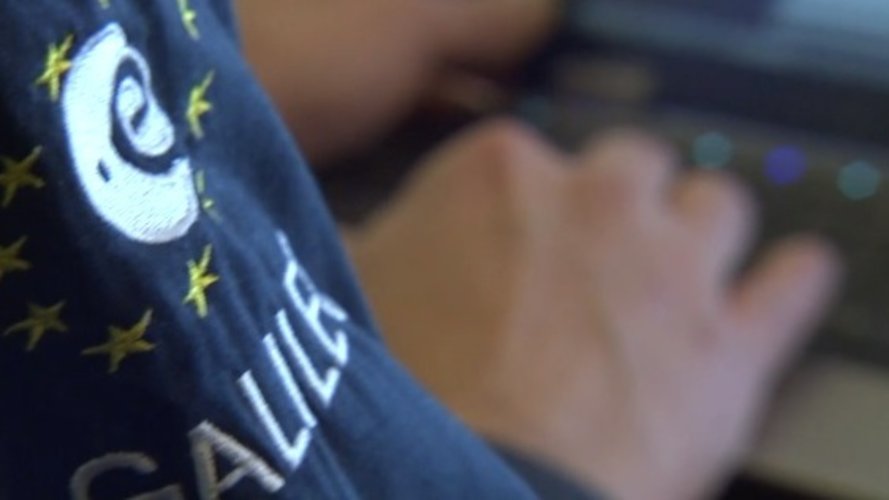
This year’s ESA/JRC International Summer School on Global Navigation Satellite Systems (GNSS) will take place in July in Kiruna, Sweden.
Galileo signal component tested for Internet of Things use
9.2.2023 12:45
One of Europe's Galileo satellites has been reconfigured to emit a new signal component optimised to serve low-end receiver devices and Internet of Things applications.
Industry Day: find out how to take part in low-orbit satnav testing
7.2.2023 12:01
ESA is embarking on the in-orbit demonstration of a new satellite navigation constellation operating much closer to our planet, utilising novel frequencies and capabilities, so the Agency is looking for European companies interested in taking part. Attend ESA’s LEO-PNT Industry Day on 7 March at ESA’s ESTEC technical centre in the Netherlands to find out more.
New Galileo service set to deliver 20 cm accuracy
24.1.2023 15:41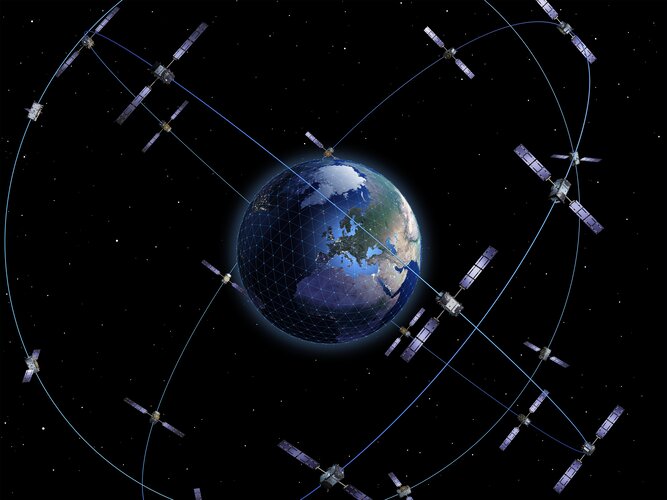
Galileo’s capabilities have grown with the addition of a new High Accuracy Service, freely available worldwide to anyone with a suitably equipped receiver. Delivering horizontal accuracy down to 20 cm and vertical accuracy of 40 cm, the High Accuracy Service is enabled through an additional level of real-time positioning corrections, delivered through a new data stream within the existing Galileo signal.
ESA to invite companies to connect with the Moon
21.12.2022 9:47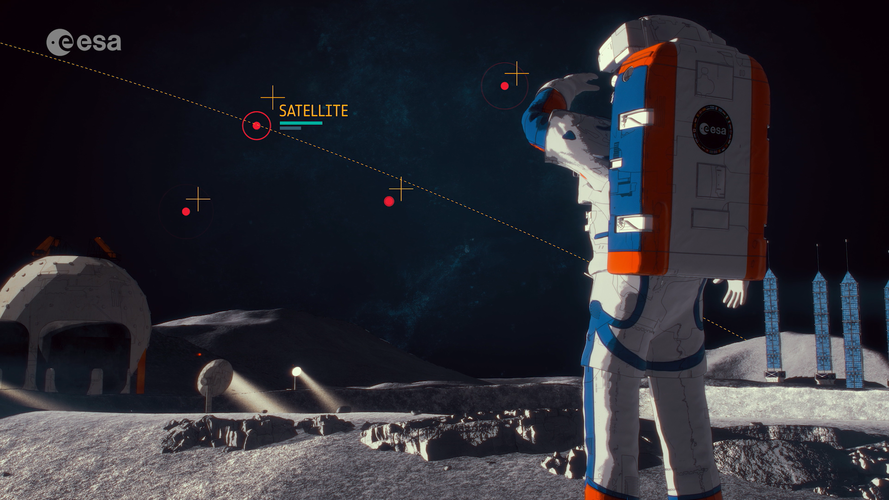
Space companies in Europe that could create telecommunications and navigation services for missions to the Moon will be invited to bid for the work, following the completion of two feasibility studies.
Even safer satnav for aircraft: upgraded EGNOS on the way
16.12.2022 11:06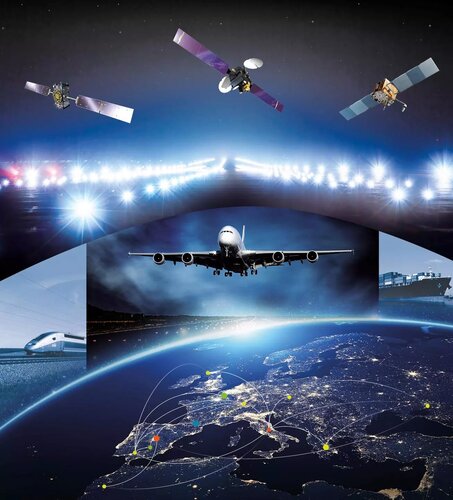
Making satellite navigation sufficiently accurate by improving its integrity for aircraft to rely on, the European Geostationary Navigation Overlay System, EGNOS, is today employed by hundreds of airports across our continent, guiding airliners down through all weathers to the point where pilots gain sight of runways to initiate landing. Now an upgraded version of the system, EGNOS v3, has passed its Critical Design Review – putting it on track to enter service by the second part of the decade.
ESA Navigation portfolio expanded and diversified by Ministerial Council
25.11.2022 14:04
ESA’s Directorate of Navigation was pledged a total of €351 million by the Agency’s Member States during this week’s ESA Council at Ministerial Level on November 22 and 23. With this funding boost ESA sees its leading role in satellite navigation strengthened with a new programme FutureNAV, the continuation of its innovation programme NAVISP, and the kick-off of the Moonlight initiative for lunar telecommunications and navigation coverage.



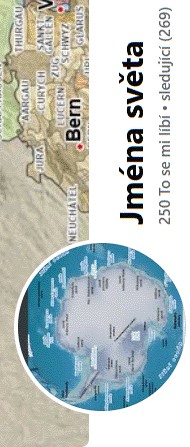
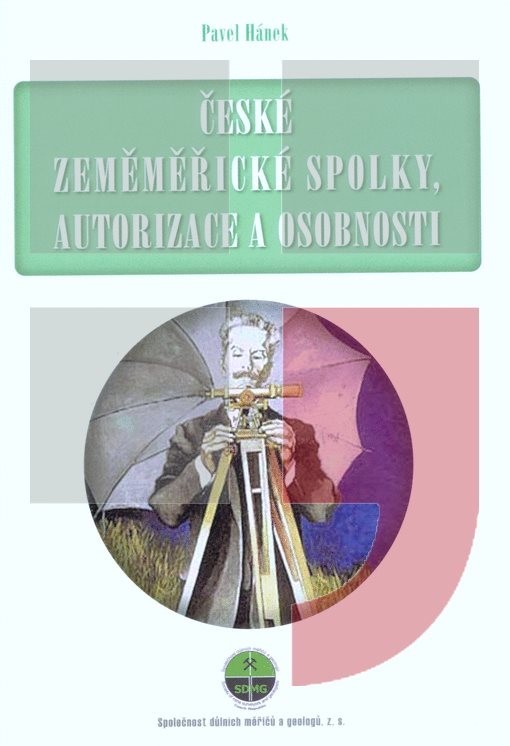
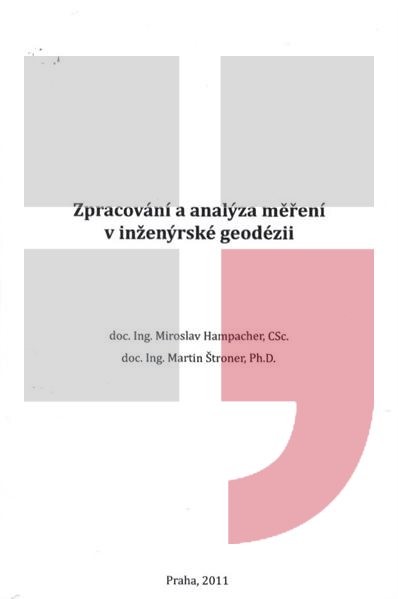
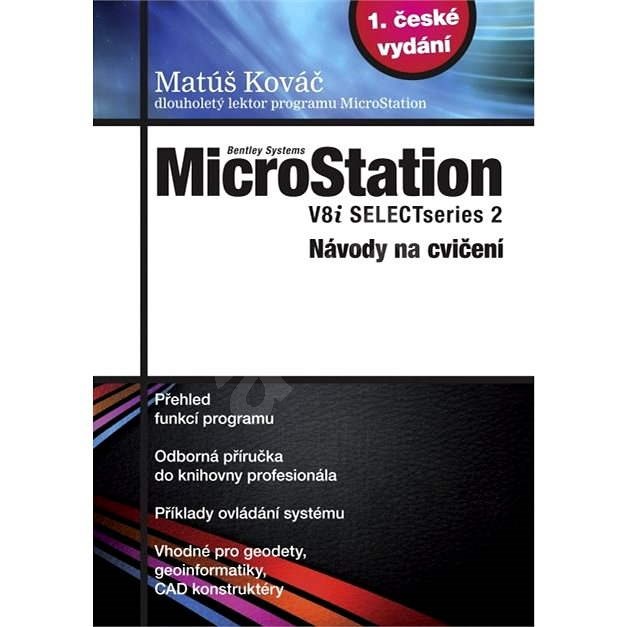
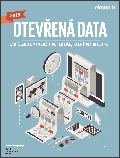

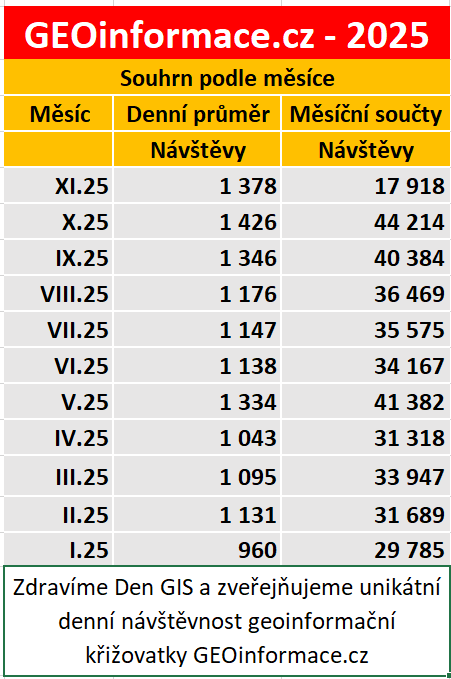
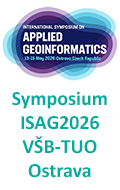
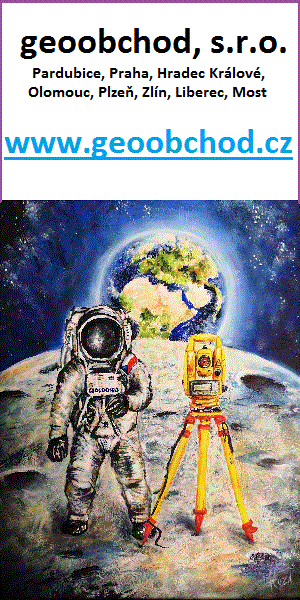

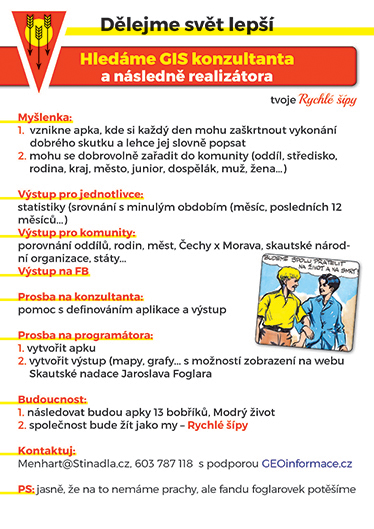
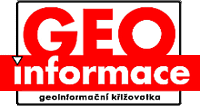

 Image:
Galileo launch history
Image:
Galileo launch history
 Image:
Galileo Launch History
Image:
Galileo Launch History
 Image:
Galileo launch history
Image:
Galileo launch history
 Image:
Celeste mission patch
Image:
Celeste mission patch
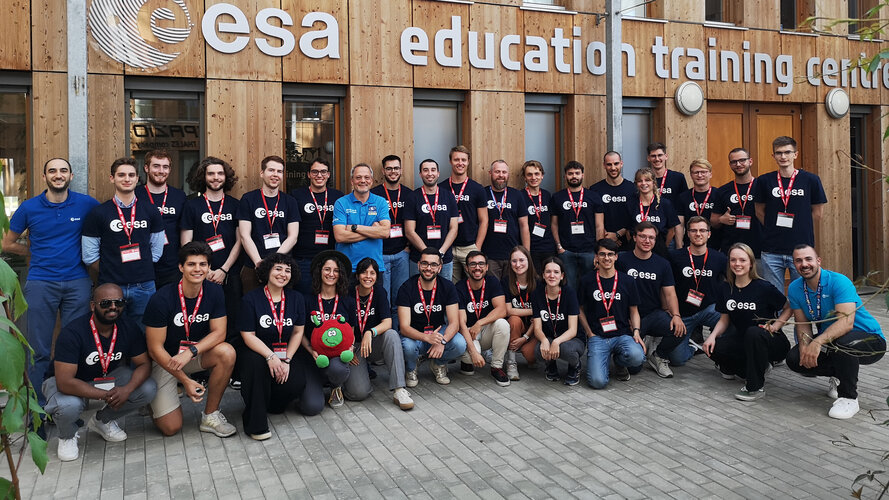
 Image:
GENESIS mission patch
Image:
GENESIS mission patch
 Image:
New Galileo station goes on duty
Image:
New Galileo station goes on duty
 Image:
Satnav from Earth to the Moon
Image:
Satnav from Earth to the Moon
 Image:
Galileo on the ground – infographic
Image:
Galileo on the ground – infographic
 Image:
Galileo on the ground – infographic
Image:
Galileo on the ground – infographic
 Image:
Galileo on the ground – infographic
Image:
Galileo on the ground – infographic
 Image:
Galileo saving lives – infographic
Image:
Galileo saving lives – infographic
 Image:
Galileo in space – infographic
Image:
Galileo in space – infographic
 Image:
How Galileo works - infographic
Image:
How Galileo works - infographic